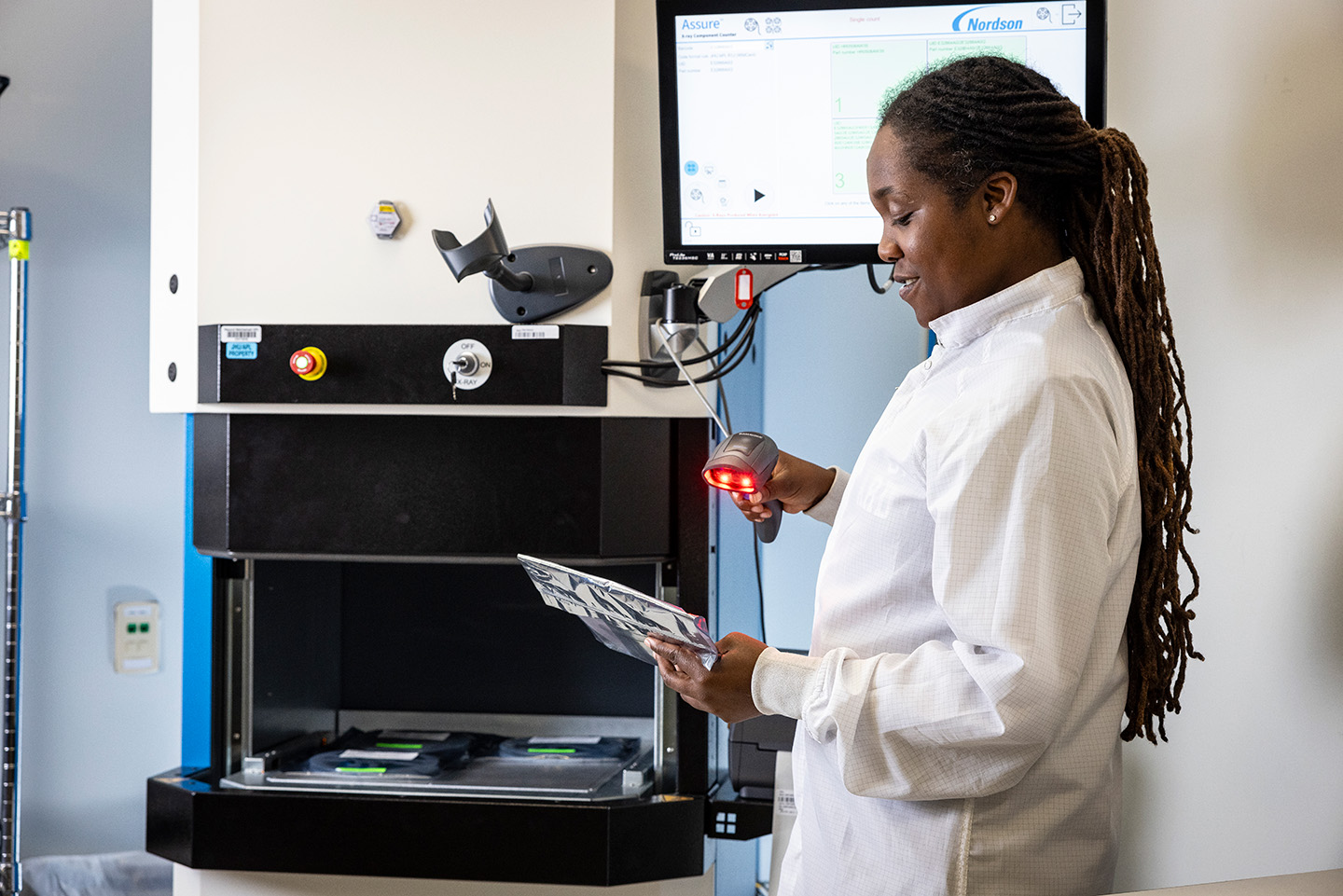News
3D-Printed Optical Waveguides Lay Groundwork for Next Generation of Microelectronics
Microelectronics are ubiquitous in modern life; they are a common thread linking the smartphone in your pocket, the financial system processing your credit card, and the defense technologies deployed in austere environments. All of those disparate applications rely on advanced microelectronics to function, which means they all also share a common but urgent challenge: Today’s technology will not meet tomorrow’s demands.
Recognizing this fact, the White House released its National Strategy on Microelectronics Research in March. Among the strategy’s key points: a need for mission-specific functions that will drive diversification of microelectronics beyond current standard semiconductors, which in turn will be enabled and advanced by approaches such as heterogeneous integration and chiplets.
As part of a Defense Advanced Research Projects Agency (DARPA) seedling effort, researchers at the Johns Hopkins Applied Physics Laboratory (APL) in Laurel, Maryland, are exploring design and fabrication techniques to develop fully printed optical waveguides, which are physical structures that guide light and will be critical to the integration of photonic, as opposed to electronic, computing modalities in future bespoke microsystems.
Photonic microsystems — which use photons instead of electrons for computing functions — offer advantages in speed, sensing and complexity of computations and will soon become as ubiquitous as their electronic counterparts.
“As we move into the future, we are going to need to route both optical and electrical signals within microsystem packages to deliver the precise performance needed for a mission,” said Sarah Adams, the Alternative Computing Paradigms deputy program manager. “Our research was an ambitious effort to show how we could facilely fabricate fully customizable optical waveguides up, over and around complex geometries, just as we will need to do in the not-so-distant future.”
From Wires to Waveguides
The APL team recently laid the groundwork for integration of such complex, multimodal architectures by demonstrating printed optical waveguides on a simple electronic system. The researchers printed a waveguide up and over a packaged component and then verified its efficacy by transmitting light through the waveguide into a sensor. This demonstration leveraged an additive manufacturing technique called aerosol jet printing, a technology that allows the team to work with multiple materials and in complex geometrical constraints.
“Think of it as having a really tiny spray paint can. Just like when you spray-paint something, you don’t touch the surface like you would with a paintbrush,” said Adams. “When we use this technique, we’re printing from about five millimeters from the surface; this gives us design freedom not accessible by conventional fabrication techniques.”
Conventional electronics and photonics fabrication techniques rely on subtractive processes: covering a substrate in layers of a material and etching away the areas where the material isn’t needed for the design.
“With conventional fabrication, you always need a primary design that you’re making copies of,” Adams said. “Just as you get design freedom when you go from milling to 3D printing, you get design freedom when you go from traditional processes to additively manufactured electronics.”


